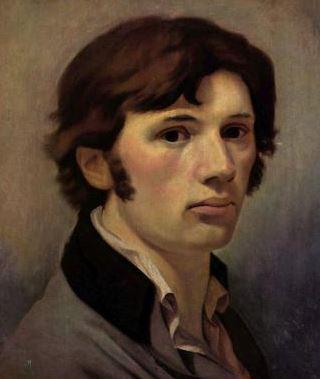Philipp Otto Runge

🎨 Who was Philipp Otto Runge?
Born: 1777 in Wolgast (Western Pomerania)
Died: 1810 at just 33 years old
Occupation: Painter, draftsman, theorist
Period: Early Romanticism
Friends & Influences: Deep connection to Romantics such as Caspar David Friedrich, Johann Gottlieb Fichte, Friedrich Schlegel – but also Goethe (correspondence about colors!)
🌌 Runge as a Mystic & Symbolist
Runge was strongly influenced by:
Nature mysticism
Christian symbolism
The idea of a "primal language of colors and forms"
He wanted to make the hidden order of the universe visible – God, man, and nature should exist in harmony with one another.
🖼️ Main Works & Ideas
🕊️ "The Times" (1803) – A Mystical Art Manifesto
Cycle of four allegorical representations: Morning, Day, Evening, Night
Symbolizes birth, life, death, and rebirth.
Closely linked to the Christian story of salvation.
Originally intended as a giant mural or window painting – a kind of "cathedral of painting."
Runge wrote that art "must become a religion."
🌈 Color Theory – The Runge Color Sphere (1810)
Parallel to Goethe, Runge developed his own color sphere: a three-dimensional model of color harmony.
Colors had spiritual meanings for him, almost like an alchemical system.
Central color: Blue – symbol of the spiritual and the eternal.
👶 "The Little Morning" (Fragment)
Symbolic representation of the birth of the day (and of life).
Depicts childlike purity, angel figures, and flowers – a visual metaphor for creation.
The work has an almost dreamy delicacy, like a heavenly vision.
🧠 Worldview & Philosophy
Pantheistic tinge: God is in everything, especially in nature.
Art as a spiritual form of knowledge – comparable to philosophy or theology.
Strong influence from Jakob Böhme, the German mystic.
Interested in the idea of a sensually perceivable truth through light, color, and form.
📜 Quotes from Runge
"What is the highest in art? – The divine!"
"The flower is the point where the earth opens to heaven."
🌿 Legacy
Pioneer of symbolism and spiritual painting.
Influence on later artists such as Kandinsky, the Blue Rider, and even Anthroposophy.
Although he died early, he left behind a profound, almost prophetic work.

